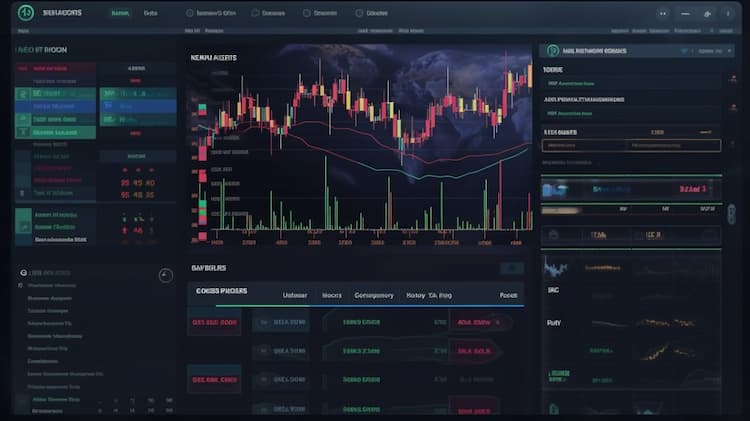SDS ISSUER
The ProShares Trust, an issuer of SDS (ProShares UltraShort S&P500), operates with a focused investment strategy designed to achieve daily returns inversely correlated to the performance of the S&P 500 Index. Under the management of ProShare Advisors, the Trust primarily invests in financial instruments, including derivatives such as swap agreements and futures contracts, with the aim of attaining inverse leveraged exposure to at least 80% of its total assets in components securities of the S&P 500 Index. Additionally, the Trust may hold money market instruments like U.S. Treasury Bills and Repurchase Agreements to manage cash balances associated with its derivative usage. Utilizing a mathematical approach, ProShare Advisors dynamically adjusts the Trust's portfolio daily to align with its investment objective, regardless of prevailing market conditions. The Trust endeavors to remain fully invested at all times while rebalancing its portfolio to maintain consistent exposure to the S&P 500 Index, thus offering investors the opportunity to profit from short-term market movements.
SDS DIVIDEND
As an inverse leveraged ETF, SDS (ProShares UltraShort S&P500) typically does not distribute dividends to its shareholders. Instead, its performance is primarily driven by daily movements in the underlying index, the S&P 500. Since SDS seeks to provide twice the inverse daily return of the S&P 500, any dividends paid out by the companies within the index would effectively be reflected in the fund's price movement. Therefore, investors in SDS should not expect to receive dividend payments as they would from traditional dividend-paying stocks or funds. Instead, SDS aims to offer a vehicle for investors looking to profit from short-term declines in the S&P 500 index.
SDS TRACKING
SDS (ProShares UltraShort S&P500) aims to provide investors with daily investment results that correspond to twice the inverse (-2x) of the daily performance of the S&P 500 Index. To achieve this objective, SDS utilizes various financial instruments, including derivatives like swap agreements and futures contracts, to establish inverse leveraged exposure to the S&P 500 Index. ProShare Advisors employs a mathematical approach to continually adjust the fund's portfolio composition, ensuring that it maintains a consistent inverse relationship with the S&P 500 on a daily basis. While SDS seeks to track the inverse performance of the S&P 500 Index over short periods, it's important for investors to note that due to factors such as compounding effects and market volatility, the fund's long-term tracking performance may deviate from its stated objective. Therefore, investors should carefully monitor SDS's performance relative to the S&P 500 Index and understand the risks associated with inverse leveraged investing strategies.
SDS CORRELATION
The correlation of SDS (ProShares UltraShort S&P500) with the S&P 500 Index is crucial for investors to understand when considering this inverse leveraged ETF. SDS is designed to provide twice the inverse (-2x) daily return of the S&P 500 Index. Therefore, in theory, when the S&P 500 declines by 1% in a day, SDS should rise by approximately 2%. However, it's essential to note that while SDS aims to achieve this correlation on a daily basis, factors such as compounding effects, market volatility, and tracking errors may cause disparities over longer periods. Additionally, SDS's correlation with the S&P 500 Index may fluctuate due to changes in market conditions, interest rates, and other macroeconomic factors. Investors should carefully evaluate SDS's historical correlation with the S&P 500 and consider their risk tolerance and investment objectives before incorporating this inverse leveraged ETF into their portfolio.
SDS SECTOR
SDS (ProShares UltraShort S&P500) is not focused on specific sectors, as it is designed to provide investors with inverse (-2x) daily exposure to the overall performance of the S&P 500 Index. The S&P 500 Index itself encompasses a broad range of sectors, including technology, healthcare, consumer discretionary, financials, and many others. Therefore, the performance of SDS is reflective of the aggregate movement of stocks across various sectors within the S&P 500. While investors may use SDS to hedge against downturns in the overall market or specific sectors, the ETF itself does not target or prioritize any particular sector. Instead, its primary objective is to offer inverse leveraged exposure to the broader U.S. equity market as represented by the S&P 500 Index.
SDS EXPOSURE
SDS (ProShares UltraShort S&P500) provides investors with exposure to the inverse (-2x) daily performance of the S&P 500 Index, a widely followed benchmark representing the performance of large-cap U.S. stocks. Through the use of financial instruments such as derivatives, including swap agreements and futures contracts, SDS aims to achieve its objective of delivering twice the inverse daily return of the S&P 500 Index. This exposure allows investors to potentially profit from short-term declines in the U.S. equity market or to hedge against market downturns. However, it's important for investors to note that SDS's exposure is leveraged and inverse, meaning that it magnifies the opposite performance of the S&P 500 on a daily basis. As a result, SDS is typically used as a tactical trading tool rather than a long-term investment, and its performance can deviate from the inverse of the S&P 500 over extended periods due to factors such as compounding effects and market volatility. Investors considering SDS should carefully evaluate their risk tolerance and investment objectives before incorporating this inverse leveraged ETF into their portfolio.



